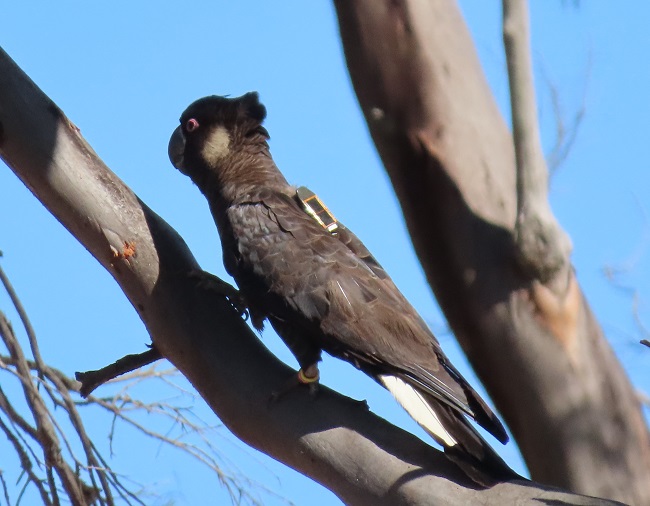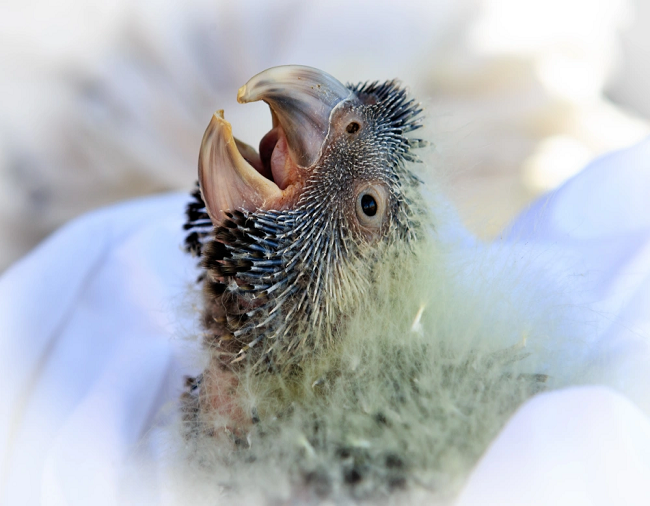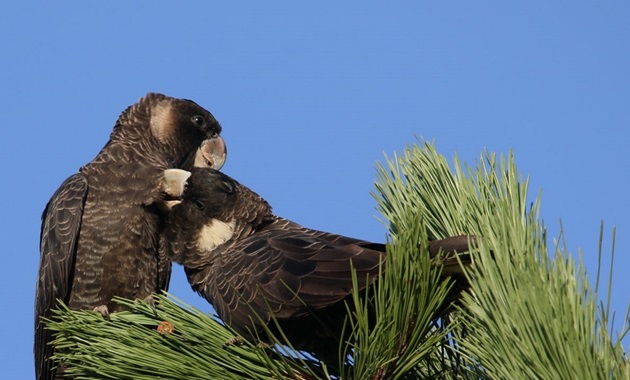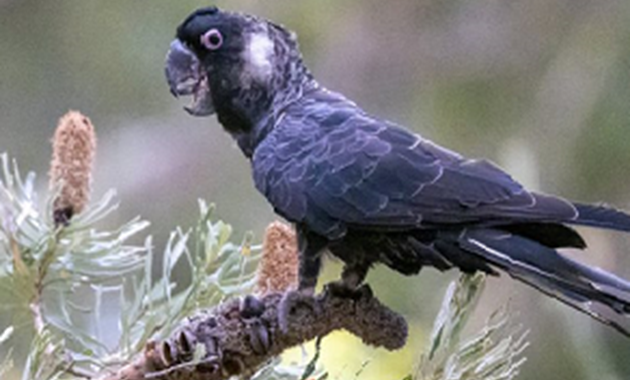The Keep Carnaby’s Flying – Ngoolarks Forever project is underpinned by science, and was established by our Black Cockatoo Conservation Management Project team at Murdoch University. This page describes our scientific research, which supports the activities of Keep Carnaby’s Flying – Ngoolarks Forever.
The Black Cockatoo Conservation Management Project is undertaking one of the largest and longest studies of wild cockatoos in the world. Through our work, we hope to help save Western Australia’s three threatened species of black cockatoos: Carnaby’s cockatoos (Zanda latirostris); Baudin’s cockatoos (Zanda baudinii) and forest red-tailed black cockatoos (Zanda banksia naso).
Our research collaborations
We have strong collaborative research ties with the state Department of Biodiversity, Conservation and Attractions (DBCA), Perth Zoo, Kaarakin Black Cockatoo Conservation Centre, WA Museum, World Wildlife Fund, BirdLife Australia and industry partners.
Our research projects focus on health, demographics and ecology of black cockatoos. Over the last 16 years we have undertaken health monitoring of Carnaby’s cockatoo nestlings throughout the species’ breeding range, and disease screening of injured black cockatoos treated at the Perth Zoo Veterinary Department for rehabilitation back to the wild.
In an exciting first for Australian cockatoos, we have developed the methodology to attach GPS and ARGOS satellite tags to rehabilitated black cockatoos, before they are released back into wild flocks. This allows us to track all three species across their distribution ranges, to identify key habitat areas (for foraging, roosting and breeding) and migratory movements, about which much remains unknown. We also attach telemetry tags to black cockatoos at key breeding sites to investigate habitat use at these sites.

Where do flocks go and what do they need?
Movement ecology and habitat use
We are using our innovative GPS and ARGOS satellite telemetry to track wild black cockatoos and collect information about flock movements and habitat use across their distribution ranges. This helps us identify key habitat-use areas for black cockatoos, to inform decisions about which areas are important to conserve and manage in order to halt and reverse black cockatoo population declines.

Are birds well, and are young birds surviving?
Health and demographics
We are investigating disease risks, health and energetics in adult black cockatoos and nestlings, including research into a suspected toxicological syndrome, Carnaby’s Hindlimb Paralysis Syndrome (CHiPS). We are also investigating methodologies for determining the age of adult birds, which is not currently possible for black cockatoos. The ability to age wild birds would allow us to determine the age structure of black cockatoo flocks, to check whether, for example, enough younger birds are surviving to reach reproductive age; and would inform population viability analyses and species recovery plans.
Ongoing threats
Through our research, we have observed that despite the dedicated efforts of black cockatoo Recovery Teams, researchers, and community groups working to save habitat and rehabilitate debilitated birds back to the wild, all three of WA’s black cockatoo species remain in grave danger of continued and catastrophic population decline. This is particularly the case given that the human population in WA is set to grow rapidly in coming years, with increasing risks to black cockatoos from clearing of their habitat, vehicle strikes, and other human-related threats. We are also facing a hotter climate, which heightens risks of black cockatoo deaths from heat stress and destruction of habitat in bushfires.
As the national Recovery Plan for Carnaby’s cockatoos identifies, the number one way to halt Ngoolarks’ slide towards extinction is to stop the ‘net loss’ of their foraging, breeding and roosting habitat. Ngoolarks urgently need enough food plants, and old trees with large nest-hollows, to allow their numbers to recover.
How our research is supporting this project
Our scientific research underpins the Keep Carnaby’s Flying – Ngoolarks Forever project. It helps us identify important habitat for Ngoolarks across Perth, and address threatening processes in different localities to help black cockatoos flourish. Working with our partner organisations, we can identify important foraging habitat, roosting trees, locations for planting black cockatoo food species and providing Cockitrough drinking stations, and hotspots for threats such as vehicle strikes, so that these can be managed.


